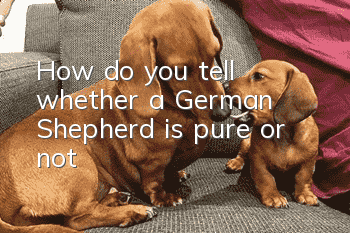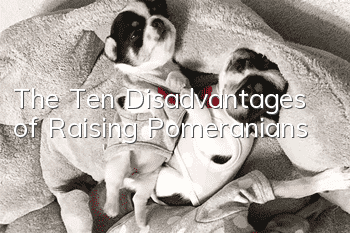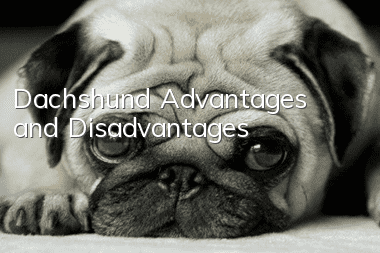How do you tell whether a German Shepherd is pure or not?

1) Appearance
The German Shepherd Dog is of medium size and slightly malleable; strong, with strong and well-developed muscles and strong bones; overall compact and harmonious. The height of male dogs is between 60-65 cm, and the height of female dogs is between 55-60 cm. Body length exceeds shoulder height, ranging from 10% to 17%.
2) Gait
The German Shepherd is a fast-moving dog. Its steps are diagonal, which means that its hind feet and front feet move at the same time on opposite sides. Since the entire limbs are constantly completing similar diagonal movements, so that the corresponding front legs must be extended far away while the action is transmitted from the rear to the middle of the body while the topline of the body does not change significantly. The height of the German Shepherd Dog is in proportion to its limbs so that the dog can make long strides with ease. When the dog charges forward, the head is forward, the tail is slightly upward, and the movement is stretched and balanced, forming an arc from the tip of the ears through the back to the tip of the tail.
3) Features
In terms of character, German Shepherd dogs are required to be steady, calm, confident, unrestrained and completely obedient to instructions (except when stimulated), and have a full mental state and light and agile movements. In addition, it must have courage, desire to fight, and a strong personality so that it can take on the tasks of defense, vigilance, and herding. The German Shepherd has a rich sense of smell, which allows it to complete the task calmly and accurately without straining the whole body and keeping the nose close to the ground to smell traces when running and tracking quickly. Therefore it is also a versatile tracking and search dog.
4) Head
The head is wedge-shaped as a whole, and the length of the head is moderate (about 40% of the shoulder height), and should not appear clumsy or too long. The overall appearance must be strong and moderately wide between the ears. The forehead is slightly raised when viewed from the front and side, and there is no or only an inconspicuous middle groove in the middle of the forehead. The ratio between the forehead and the ends of the mouth and nose should be 50/50. The width of the forehead must be the same as its length. The skull must have a smooth curve from the ears to the tip of the nose, and there must be a clear division between the skull and the muzzle. Lips must be tight, elastic, well-puckered, and dark in color.
5) Nose
Must be black.
6) Mouth
Teeth must be healthy and appear strong, a total of 42 teeth. The German Shepherd's teeth are staggered like scissors when biting.Shape, that is to say, the incisors bite like scissors. When biting, the incisors of the upper jaw cover the incisors of the lower jaw. The jawbone must be strong and powerful.
7) Eyes
The eyes are medium in size and almond-shaped, with the corners of the eyes tilted downward and the eyeballs should not bulge. Eye color should be as dark as possible. If the color is lighter and the eyeballs are protruding, it is not ideal, which will affect the image of the dog.
8) Ear
The German Shepherd’s ears are upright and medium in size. When the ears are upright, the upright directions of the two ears are almost parallel (cannot point to both sides). The ear sockets must be forward. Broken, droopy ears are defective. It is normal for the ears to be turned back during exercise and quiet times.
9) Neck
The neck should be strong and muscular, with no sagging skin. The angle of inclination between the neck and the torso is approximately 45 degrees.
10) Torso
The upper line of the body runs from the neck, through the high and long shoulders, through the straight back, to the slightly downward-sloping hips. The overall line looks uninterrupted. Back of medium length, strong, strong and muscular. The loin is broad, short, powerful and muscular. The croup should be long and slope downward (the angle of slope is about 23 degrees, and the line from the back to the tail should be continuous without interruption.)
11) Chest
The German Shepherd's chest must be moderately wide, round, long and distinct. The depth of the chest should account for 45% to 48% of the dog's total height.
12) Ribs
The ribs of the German Shepherd Dog must have proper curvature. Excessive roundness and flatness will be considered faults.
13) Tail
The lower part of the German Shepherd's tail should be thickly furred, and the length should reach at least the claw joint, and the ideal length should reach the middle of the claw bone. When at rest, the tail should be slightly curved, like a saber. As the tail lifts and swings, its curvature increases. Surgical changes to the shape of a Collie's tail are prohibited.
14) Front legs
The forelimbs should be straight from all angles, and the legs should be absolutely parallel when viewed from the front. The length of the shoulder bone is equal to that of the upper arm, and the muscles are strong and strong. The angle between the shoulder joint and the upper arm is 90 degrees, and no more than 110 degrees at most. The elbow joint should neither be dislocated nor compressed during standing and movement. The lower arms should be straight and parallel from all angles, with strong, muscular muscles. The length of the front midfoot should be one third of the lower arm, and the angle between the front midfoot and the lower arm is 20-22 degrees. Failure to do so will affect the ability as a working dog, especially in terms of endurance.
15) Claw
The paws of a German Shepherd are rounded, and the toes should be close together and have a semicircular arch. The bottom of the paws should have rich pads that are wear-resistant and cannotHas a crispy and tender skin. The dog's nails are short, thick, strong, and black.
16) Hind legs
The position of the hind leg bones extends to the Shepherd’s back. Viewed from the back, the hind leg bones on both sides should be balanced. The lengths of the upper and lower thigh bones are almost the same, and the angle between the two bones is approximately 120°. Spend. The thighs must be strong and muscular, with good musculature. The claw joints must be strong, solid, and located in the vertical line of the hind claws.
17) Skin
Tight, without any wrinkles.
18) Body hair
The standard body hair types of German Shepherd dogs are divided into surface body hair and undercoat hair. The surface body hair must be thick, straight, and densely covered. The hair on the head, ears, paws and legs must be long and thick. The hair on the hind legs can form a hair-rich area similar to "pants".
19) Color
The basic color of the German Shepherd's hair should be black, with a certain amount of brown, reddish brown, golden yellow and light gray. In addition, there is a kind of German Shepherd whose basic hair color is gray, accompanied by cloud-like black hair, and its back and face are also black. Furthermore, the chest and ribs of the Shepherd Dog can be white, and the inner and lower sides of the dog's body are allowed to be light white, but this color is not ideal. The dog's nose hair must be completely black. Too little black hair on the face, too little black hair around the eyes, and light or white nails and tail tips should be considered a lack of pigmentation. The undercoat of a Collie should be light gray. White is not allowed.
20) Height and weight
Male: Height 60~65 cm Female: Height 55~60 cm
Weight: 30~40kg | Weight: 22~32kg
21) Testicles
Male dogs must have a pair of testicles, which must be well developed in the scrotum.
22) Defects
Any deviation from the above standards will be considered a defect in the German Shepherd Dog, and the severity of the defect can be accurately determined by grade.
23) Serious defects
Deviation from the above-mentioned Shepherd Dog breeding standards and affecting the practicality and ornamental quality of the Shepherd Dog are regarded as serious shortcomings of the Shepherd Dog. In addition, a Collie that lacks pigmentation, is overweight, is lax and sluggish, has lost or defective orientation, and has poor paw development will also be considered seriously faulty.
24) Ear defects
The ears are too low on both sides of the skull. The ears are soft and curled at the tips.
25) Defects that must not be used for reproduction
1. Fragile personality and excessive neurosis, as well as nervous hissing.
2. Proven to be strictSevere hip disease.
3. Single howl, cry, and testicle deformity.
4. Deformed tail and ears.
5. The dog is damaged.
6. Incomplete canine teeth.
7. The dog’s claws are incomplete.
8. 1 cm above or below the normal height standard for German Shepherd dogs.
9. Albinism.
10. If the dog’s head hair is white. (Of course, if the hair on the dog's nose and eyes is still black, it is accepted.)
11. Medium and long-haired dogs (the hair on the head is soft, long and loose, especially the hair on the inside and outside of the ears is too long; the hair on the back of the front and rear legs is too long; the hair on the lower part of the tail is too long).
12. Long-haired dogs (there is no epidermal hair at all, and the dog’s hair hangs down from the middle of the back to both sides of the body).
- Essential tools for dog bathing
- Daily care for Dalmatian nails
- How to do toilet and urination training for dogs?
- Three things to pay attention to when choosing clothes for your dog
- Puppy deworming and vaccination sequence
- How to train a dog not to eat randomly? Dogs are prohibited from picking up food anywhere!
- Introduction to symptoms of early pregnancy in Chihuahuas
- How to treat lactation in female dogs after giving birth?
- What should I do if my dog poops and urinates indiscriminately? Correct the dog’s pooping and urinating behavior!
- Why do Samoyed dogs vomit? These are the reasons why Samoyed dogs vomit!



